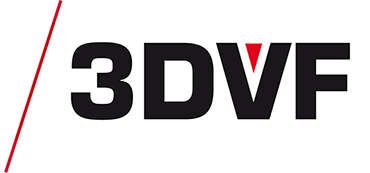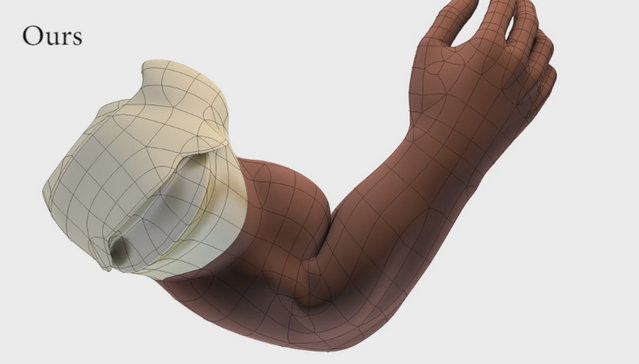Rodolphe Vaillant, Gaël Guennebaud, Loïc Barthe, Brian Wyvill et Marie-Paule Cani présenteront lors du SIGGRAPH Asia leur travail de recherche Elastic Implicit Skinning: a Robust Iso-Surface Tracking for Interactive Character Skinning.
Ce projet présente une nouvelle technique de skinning pour les personnages 3D. Il s’appuie sur la méthode récente du skinning implicite, mais la rend plus robuste face à des mouvements extrêmes, notamment lorsqu’il y a des points de contacts entre différentes parties de la peau et des membres pliés avec des angles aigus au niveau des articulations.
Voici la vidéo de présentation associée à la publication :
Pour le moment cette technique n’a été implémentée qu’en version standalone (sous CUDA), ce qui implique qu’il n’existe pas de plugins pour les logiciels 3D du marché. Néanmoins, les auteurs sont ouverts aux collaborations (les contacter via rodolphe-vaillant.fr, irit.fr/~Loic.Barthe/).
Voici également l’abstract complet de la publication, en anglais :
We present a novel approach for interactive character skinning, which takes advantage of the best features of the recent implicit skinning method, and make it robust to extreme character movements, such as those involving contacts between different parts of the skin and sharp bending angles at joints. While keeping the basic idea of implicit skinning, namely approximate the character at each animation step by a 3D scalar field in which mesh-vertices are appropriately re-projected, we depart from the processing pipeline used so far. Instead of being bound by an initial skinning solution, used to initialize the shape at each time step, we use the skin mesh to directly track iso-surfaces of the field over time. Achieving this requires solving two challenging problems: firstly, all contact surfaces generated between skin parts should be captured as iso-surfaces of the implicit field; secondly, the tracking method should capture elastic skin effects when the joints bend, but also insure that the skin comes back to its rest shape when the character comes back to rest. Our solutions to these problems include: new composition operators enabling the combination of blending effects with local self-contact between implicit surfaces, and a tangential relaxation scheme derived from the as-rigid-as possible energy to solve the tracking problem.The result is a very robust interactive system that can handle contacts in a way that is visually plausible, exhibits the global effect of skin elasticity (sliding), and is suitable for use in a production pipeline.
La page du projet proposera après le SIGGRAPH Asia 2014 la publication complète.

